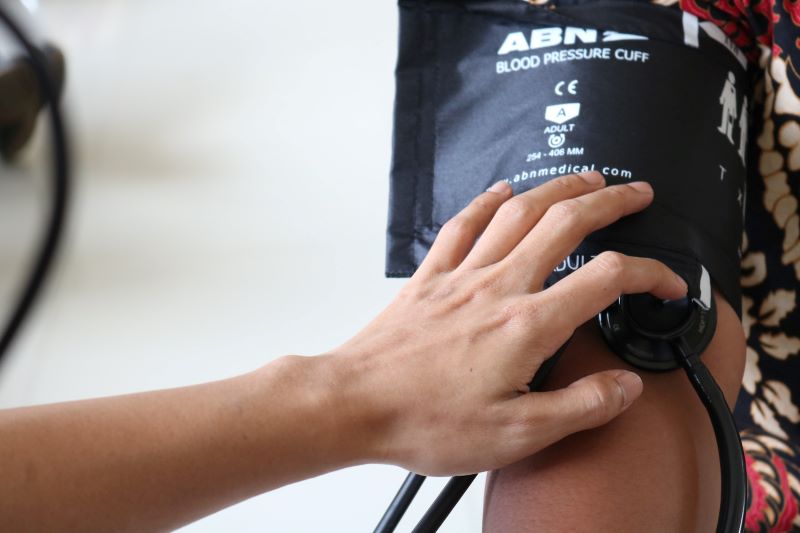Hypertension and Passing Your DOT Physical Exam
Unfortunately, high blood pressure, referred to as hypertension, is becoming more common and affects nearly 50% of adults. In addition to taking care of your health problems today to prolong your life, you need to have your blood pressure under control to pass the Department of Transportation (DOT) physical to be a commercial truck driver.
Here is a breakdown of all you need to know about your blood pressure to prepare for your DOT exam and what you can do to ensure your blood pressure gets passing marks.
What Is Your Blood Pressure?
Your blood pressure is a combination of two numbers. It’s typically written like this: 100/60 mmHg. The first number is your systolic blood pressure, which is the pressure in your arteries when your heart pumps blood around your body. The second, and typically lower number, is the pressure in your vessels between heartbeats. The “mmHg” is the unit used to measure blood pressure read as millimeters of mercury.
Why Check Your Blood Pressure?
Initially, you can have elevated blood pressure with minor symptoms or none at all. You could develop headaches, dizziness, blurred vision, nausea, or shortness of breath, which you or your doctor could easily attribute to other problems. If undetected or left untreated, your high blood pressure, or hypertension, is considered a silent killer because of all the health problems it can lead to:
- Permanent Bone or Vision Loss
- Vascular Dementia
- Peripheral Arterial Disease
- Kidney Disease or Failure
- Cardiac Arrest (Heart Attack)
- Stroke
- Heart Disease or Failure
- Aortic Aneurysms
The DOT requires that medical examiners check your blood pressure to prevent avoidable accidents. Depending on the severity, you may be limited to a temporary certificate or even disqualified from driving.
FMCSA Medical Guidelines For Blood Pressure
Here are the current Federal Motor Carrier Safety Administration (FMCSA) guidelines for blood pressure:
To be certified to drive for the DOT’s maximum of two years, you must have a blood pressure range below 140 systolic and lower than 90 diastolic. If you have a diagnosis of hypertension but your blood pressure is well-controlled by medication, you may be medically certified to drive for one year. You will need to recertify annually if you fall into this category.
If you have a blood pressure of 140 to 179 systolic or 90 to 109 diastolic (both stage 1 and 2), without a diagnosis of hypertension, you are a candidate for antihypertensive drug therapy. The examiner can give you a one-time, one-year certification to reduce your blood pressure readings to less than 140/90. If your blood pressure is within the range mentioned and you already have a diagnosis of hypertension, the examiner can give you a one-time three month medical certificate. After demonstrating improvement, you can be certified for a year and yearly after that.
If your blood pressure is 180 systolic or 110 diastolic, you have stage three hypertension, and the examiner will have to disqualify you until you reduce your blood pressure below 140/90. You also need to be tolerating treatment well. You will get certified for six-month intervals, so you can have your blood pressure monitored more frequently.
Tips For Reducing Your Blood Pressure
There are several ways to lower your blood pressure to allow you to pass the DOT physical:
- Reduce Your Sodium Intake: Adults should consume only roughly one teaspoon of salt daily. You’ll meet your daily amount with one burger from McDonald’s, so it’s fair to say most adults exceed this recommendation frequently. Overeating salt consistently will contribute to your high blood pressure.
- Eat Fresh Foods: This goes along with reducing your sodium intake. Fruits, vegetables, whole grains, and minimally processed meats have very little sodium compared to processed, shelf-stable, and restaurant foods.
- Exercise and Hydrate Regularly: If you engage in regular exercise, especially cardio, and drink enough water, you will help your body flush out the excess salt when you do indulge and go over your daily recommendation.
- Lose Weight: While hypertension can be inherited, carrying extra weight will force your heart to work harder to pump your blood, putting more strain on your vessels. Your blood pressure will creep up. Losing weight will reduce the stress on your circulatory system, and help your numbers drop.
- Reduce Your Alcohol, Caffeine, and Nicotine Consumption: All of these substances will stress your body in various ways, increasing your blood pressure. While avoiding them altogether is better, it is recommended that you not consume any of these within the 48 hours before your physical, as they can contribute to high readings.
- Reduce Stress: Life is stressful. That stress can lead to increased blood pressure when not dealt with effectively. Any stressors in your life you can reduce, even if it’s just prioritizing getting enough sleep, will help your numbers.
- Speak to your doctor if you’ve taken these steps and still are getting high readings. You may need to consider medication to help lower your blood pressure. More rarely, you could be experiencing White Coat Syndrome, where you are anxious in the presence of doctors or knowing the doctor is checking. Your blood pressure skyrockets because of your anxiety or nerves. You can check your blood pressure at home to see if that helps. If it’s routinely low at home, warn your doctors so they can test you multiple times throughout your visit. It will typically return to your average range by the end of the exam.
Hypertension has the potential to be a terrible silent killer. Beyond getting your DOT medical card, you should be concerned about the long-term health effects you can experience. Taking these seven steps to keep your blood pressure low will affect your future well-being and won’t do any harm even if you have a clean bill of health right now.

